[PHOTOS: SARAH COULBER]
I’m the sort that gets rather nervous at the idea of bringing in a wild animal for observation. For starters, it’s usually illegal. But I’m not talking about birds and mammals or even reptiles and amphibians (you have to let them be!)…I’m talking about caterpillars. My daughter loves the idea of bringing them in and taking care of them, but unless we know for sure what it eats and we can keep it relaxed and healthy, then it’s a no-go.
This summer, we spotted a caterpillar munching our carrot leaves. Looking up its features in relevant books and keeping in mind our region of Canada, we determined it was a black swallowtail. They eat carrot, parsley and Queen Anne’s lace leaves…and we had lots of the latter around. So we put water in some small plastic tubes that we kept from the florists over the years, the kind that keeps flowers fresh while keeping the water safely sealed inside.
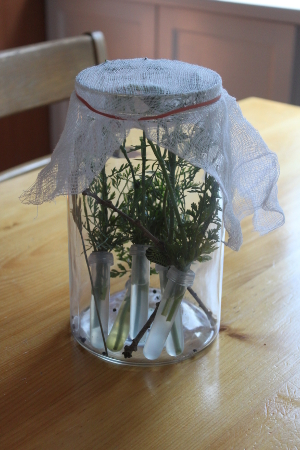
We then cut stems of parsley and Queen Anne’s lace and put them inside a tall glass jar. My daughter had the good sense to add a couple of sticks to the mix, for when our friend was ready to make its chrysalis. We then covered the jar with cheesecloth and an elastic band, for ample air.
This was July 2nd. Our friend soon aclimatised to the jar and our kitchen table, which we kept in a bright spot out of the direct sun, and was munching and pooping and napping rather a lot. By Wednesday afternoon it had moved to the stick and a few hours later we were excited to find it making a white thread which it used to attach itself to the stick. I was able to take some photos, albeit a bit blurry due to the thick curved glass.
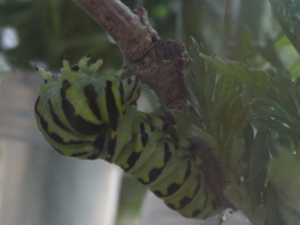
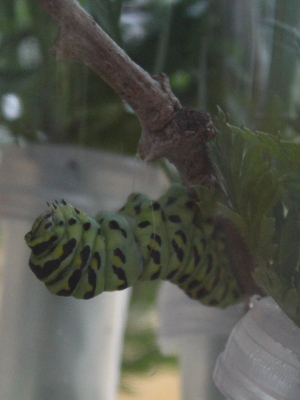
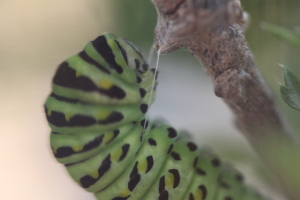
Our black swallowtail caterpillar making and arranging its thread around its upper body
It remained the same (as the photo directly above) until Thursday night when a chrysalis formed while we slept, evidence of which was waiting for us Friday morning.
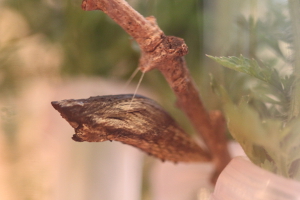
I had to use indoor lighting to get a photo of the chrysalis, hence the shiny look.
Then it was time to wait – around 2 weeks we figured. Well, this morning, holding onto that famous stick was a beautiful butterfly. We were thrilled!
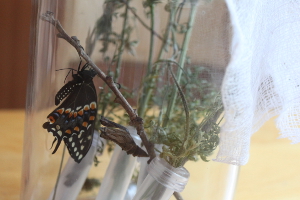
I don’t know how long it was like that, but in the end it took a couple of hours or more for its wings to fully dry and become stiff enough to fly. During that time we took it outside and let it climb onto my finger to help it out (something it seemed very comfortable to do, to my delight), but as it was windy and its wings were so limp, we put it back in the jar.
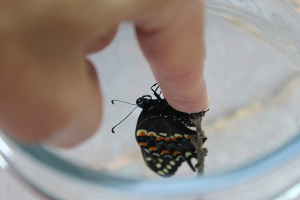
Later, as it moved its wings more, we brought it out again to perch among the flowers.
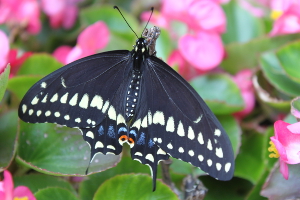
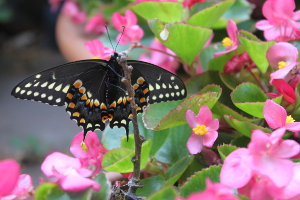
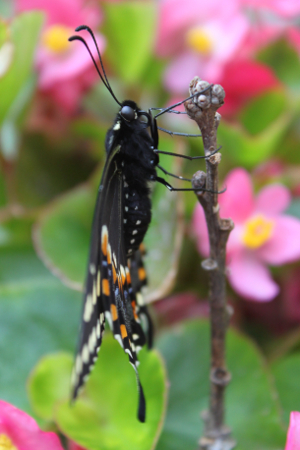
Top, underneath and side views
Unfortunately, it was getting late for an oil change appointment, day camp and work. But we didn’t want to miss the magical moment when it first took to the air, a moment we’d been anxiously waiting for. So with its now stiffened wings, my daughter gently carried it to a sunny spot and hoped that the warmth would inspire it to fly. After a short while it flew and our hearts soared with it!
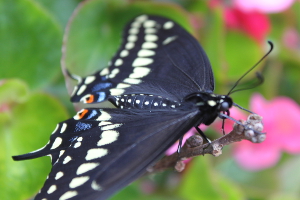
This photo shows what looks like soft fur either side of its abdomen!

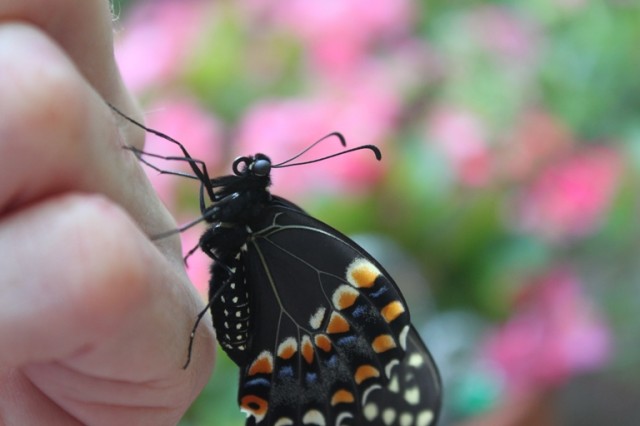

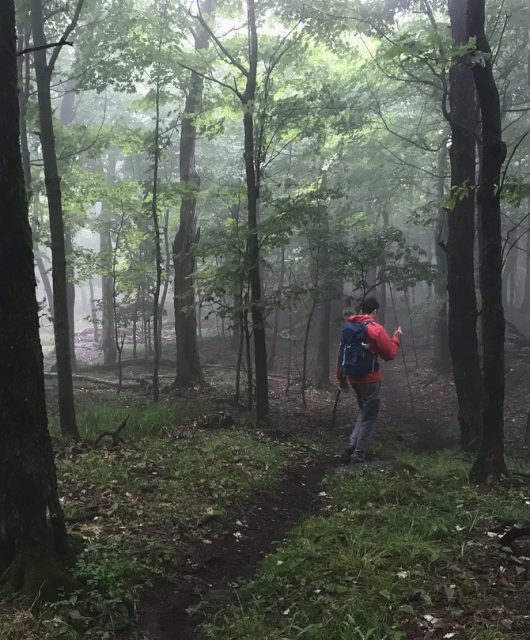
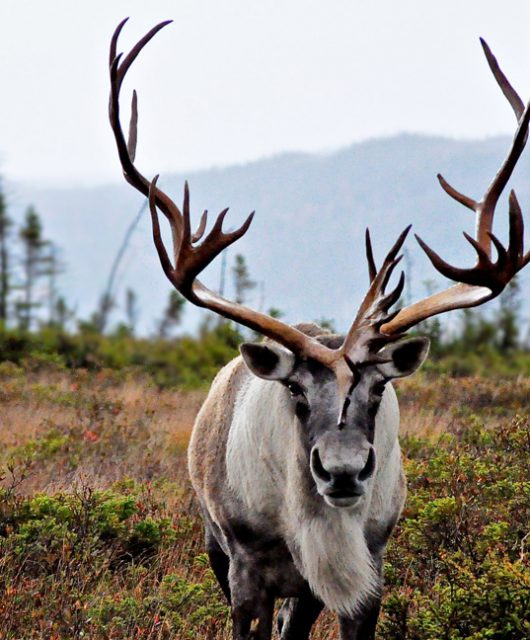
12 comments
I enjoyed reading your description of nurturing the larva through the chrysalis stage and then to become a beautiful butterfly. How exciting! This year, we have had nine black swallowtail caterpillars munching on our parsley and I am now regretting that I didn’t do as you did and raise one or two of them under controlled conditions. They have now all disappeared and hopefully have made a chrysalis somewhere, but now my fear is that in the garden clean-up, I will somehow shove them into a garden waste bag. Therefore, I’ve determined I won’t clean up that part of the gardening the hope the chrysalis survives to metamorphose into a butterfly. I have read that this doesn’t happen sometimes until the following spring.
Good Luck, NancyB! They are truly beautiful butterflies 🙂
Help! We’ve been raising 3 Eastern Swallowtails from caterpillars found in m neighbors parsley. The last one formed it’s chrysalis August 21/19 but so far, nothing has emerged.
We assume it’s planning to overwinter so want to know where to place him for his best chance for survival. It’s still in our his hamper in the house but assume it needs cold temps.
Would appreciate any help.
Hello and thank you for contacting the Canadian Wildlife Federation with your question. You’re right, the chrysalis does have to be kept someplace cold (similar to outside temperatures) as well as someplace that doesn’t receive artificial light – they need short day lengths. If they’re kept inside, they’ll think it’s spring with the warmer temperatures, emerge too early and won’t have a food source. Even a basement is considered too warm.
I’ve heard of people keeping their container with their chrysalis:
• Outside in a protected area; away from predators, direct sun, rain and snow
• A screened in three season porch – where the temperature is similar to outside
• Sheds
• Unheated garages
I hope this helps and please let us know if we can help with anything else.
Hello.
A few weeks ago I recovered one small egg from a parsley leaf in the garden. I put it in a jar and when it turned dark I knew it was about to hatch. I now have a very tint black caterpillar with the telltale white stripe, munching away on parsley and dill.
My question is this, – how long does the caterpillar stage last for swallowtails before they form a chrysalis?
Thanks,
Steven
Hi Steven
That’s great! You can bet on the larval stage lasting between three to four weeks. Perhaps, you can take a few photos and add them to our CWF Photo Club! http://CanadianWildlifeFederation.ca/photoclub
Hi there.
So nice to find others who share my joy of watching these little guys grow.
Every year we grow lots of dill which the females like to lay eggs on. We are very happy to share our dill and watch the caterpillars.
Once they decide it’s time to form a chrysalis they seem to disappear. I enclosed one plant in a pot with netting to keep predators out, but my caterpillar seemed anxious to travel and was climbing on the netting. (even though I stood up many sticks to choose from) The little guys seems to have climbed through somehow overnight and is finding another place to form its chrysalis. I do have two other caterpillars in there as well. Hopefully one will stay and I can enjoy seeing it emerge next year.
We hace a cocoon on the bottom of my gazebo curtain. Can I move it or would it die if I detatch it?
Moths and butterfly caterpillars usually do not stay in the cocoon more than a few weeks, so if you can wait that would be best. Some species overwinter in a cocoon so if it is not empty three weeks from now, then it may be in an overwintering state and can be moved to nearby vegetation, low to the ground to mimic the height that the cocoon was attached to the gazebo curtain.
This happened to me with a Eastern Tiger Swallow tail, it wintered in our pool shed I brought it out in the spring and some sort of hornet drilled a hole out of the cocoon. I have a Black Swallowtail caterpillar in a butterfly habitat right now and a monarch in an other. I released 16 Monarch last summer so far I have only found one. I think the earwigs eat the eggs, not sure.
Hello, I took care of two caterpillars that I found in my parley plant, they did the supposed natural process but when they hashed I had a non very nice surprise, it was not a beautiful black swallow tail butterfly as I had last year; in stead i got something that looks like bee. can you give me a feed back on this. thanks
Thank you for your comment. If you have photos of the caterpillars or the bee I would be happy to take a look at them. Unfortunately, without photos it is difficult to know what the species may have been.